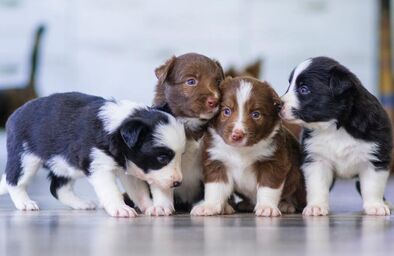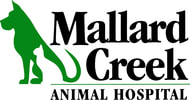Laurie Anne Walden, DVM Photo by Elena Mozhvilo Photo by Elena Mozhvilo Deciduous (baby) teeth that don’t fall out on their own are called persistent deciduous teeth. These extra teeth can cause problems if they are not removed surgically. Persistent deciduous teeth are most often seen in small-breed dogs and are uncommon in cats. Deciduous Teeth Like most mammals, dogs have 2 sets of teeth in their lifetime. Deciduous teeth erupt when puppies are a few weeks old and are replaced by permanent teeth from about 4 to 7 months of age. Dogs have 28 deciduous teeth and 42 permanent teeth. Deciduous teeth are able to fall out on their own because their roots gradually resorb (dissolve). Think of how children’s baby teeth look after they fall out: instead of long roots, they have jagged edges. Resorption of deciduous tooth roots is a complex process that is triggered, at least in part, by the pressure that erupting permanent teeth put on the deciduous tooth roots. As a permanent tooth starts to push toward the surface, the root of the deciduous tooth directly above it resorbs until the deciduous tooth falls away. The permanent tooth then emerges in the space left vacant by the deciduous tooth. Sometimes a permanent tooth isn’t in the right position under the gum, so the root of the deciduous tooth above it doesn’t resorb as it should. The permanent tooth then erupts next to the deciduous tooth, which stays in place as a persistent deciduous tooth. A common persistent deciduous tooth in dogs is the canine tooth, which is the long, sharpish tooth next to the incisors at the front of the mouth. Dogs with a persistent deciduous canine tooth have 2 canine teeth (1 deciduous and 1 permanent) right next to each other, usually touching. Problems Caused by Persistent Deciduous Teeth Two teeth crammed into a space meant for 1 tooth is never good. Overcrowding from a persistent deciduous tooth leads to a number of problems:
A permanent tooth that has been displaced by a persistent deciduous tooth is positioned incorrectly within the row of teeth. Displaced permanent teeth might be angled toward the lips or the tongue. A displaced lower canine tooth can hit the roof of the mouth when the mouth is closed. Diagnosis A persistent deciduous tooth is diagnosed when a deciduous tooth and the corresponding permanent tooth have both erupted but the deciduous tooth is still firmly fixed in place, not wiggly and getting ready to fall out. Dental radiographs are used to evaluate the tooth roots and look for other problems like impacted or missing teeth. Treatment A persistent deciduous tooth needs to be surgically removed as soon as it is diagnosed. The longer it stays in the mouth, the greater the risk of problems with the permanent tooth. If a persistent deciduous tooth is removed early, the permanent tooth will most likely move into the correct position on its own as the puppy grows. Photo by Elena Mozhvilo on Unsplash Comments are closed.
|
AuthorLaurie Anne Walden, DVM Categories
All
Archives
June 2024
The contents of this blog are for information only and should not substitute for advice from a veterinarian who has examined the animal. All blog content is copyrighted by Mallard Creek Animal Hospital and may not be copied, reproduced, transmitted, or distributed without permission.
|
- Home
- About
- Our Services
- Our Team
-
Client Education Center
- AKC: Spaying and Neutering your Puppy
- Animal Poison Control
- ASPCA Poisonous Plants
- AVMA: Spaying and Neutering your pet
- Biting Puppies
- Boarding Your Dog
- Caring for the Senior Cat
- Cats and Claws
- FDA warning - Bone treats
- Force Free Alliance of Charlotte Trainers
- Getting your Cat to the Vet - AAFP
- Holiday Hazards
- How To Feed Cats for Good Health
- How to Get the Most Out of your Annual Exam
- Indoor Cat Initiative - OSU
- Introducing Your Dog to Your Baby
- Moving Your Cat to a New Home
- Muzzle Training
- Osteoarthritis Checklist for Cats
- What To Do When You Find a Stray
- Our Online Store
- Dr. Walden's Blog
- Client Center
- Contact
- Cat Enrichment Month 2024
|
Office Hours
Monday through Friday 7:30 am to 6:00 pm
|
Mallard Creek Animal Hospital
2110 Ben Craig Dr. Suite 100
|
Site powered by Weebly. Managed by IDEXX Laboratories

 RSS Feed
RSS Feed